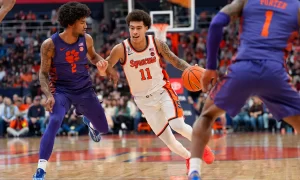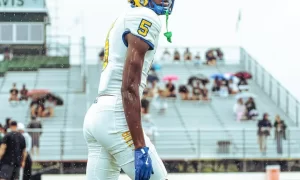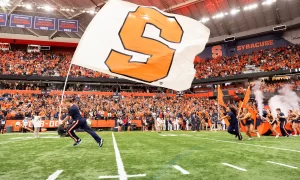Last season, some of Syracuse’s biggest offseason acquisitions came via the grad transfer route. Now, the Orange likely has to dip its toe in that market again, and a big target has Syracuse on his wish list. South Florida guard Geno Thorpe told CBS’ Jon Rothstein that he is considering SU along with fellow ACC foe Pitt.
Thorpe’s 6-foot-4 size suggests that he is a smaller shooting guard, but he was put in the point guard role for the Bulls and controlled their offense by leading the team amongst qualified players with 15.1 points per game as well as pacing USF in assists at 4.6.
Some may think that since Thorpe is a Pittsburgh native that the Panthers would have the upper hand in recruiting, however, that was not the case last season with Andrew White, who was being recruited by his hometown Richmond Spiders and ultimately chose SU. Also, this is not Thorpe’s first rodeo on the open market. He initially committed to Penn State where he played two seasons for the Nittany Lions. He then transferred to USF after his sophomore season.
At this point in Thorpe’s career, he has only played on poor to mediocre teams, but Syracuse could be his opportunity to change that. While this year’s team isn’t shaping up to be some type of juggernaut, neither was the 2016 team that landed in the Final Four. As Thorpe’s career winds down, he could look for a program that has a chance to play in the tournament, something Thorpe has yet to do in his career.
As for the fit, the grad transfer checks a lot of the desirable boxes. He knocked down 37 percent of his shots from deep, which is better than any returning SU player. Along with that, his scoring totals would have ranked second on the Orange’s roster. This is particularly big for a team that is losing five of its seven leading scorers.
We saw last season how the grad transfers struggled at times on defense in the 2-3 zone. This could be difficult for a guy like Thorpe whose defense is not the strongest part of his game. However, if Thorpe were to pick sooner rather than later, he would have more time to learn the fundamentals of Jim Boeheim’s complex system.






















